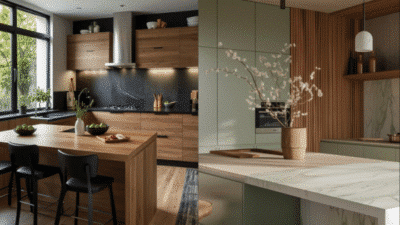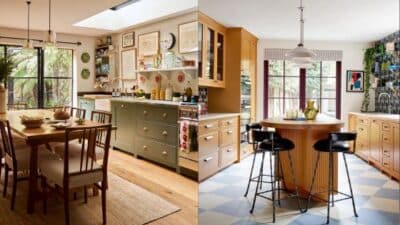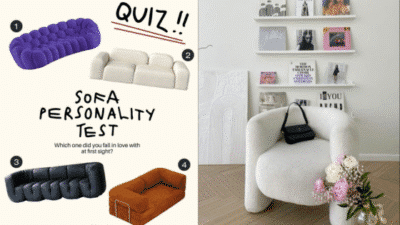Blue Pantone style can bring calm and freshness to any home. Using the right shades of blue from the Pantone palette creates a balanced and welcoming space. This style works well with many design themes, from modern to classic.
Choosing the perfect blue tones helps highlight different rooms while keeping a smooth flow throughout the house. Blue is versatile, making it easy to blend with other colors and materials for a stylish look.
Simple decorating tips and thoughtful placement of blue elements can enhance the home’s atmosphere. Blue Pantone style is practical and timeless, fitting well with seasonal changes and evolving tastes.
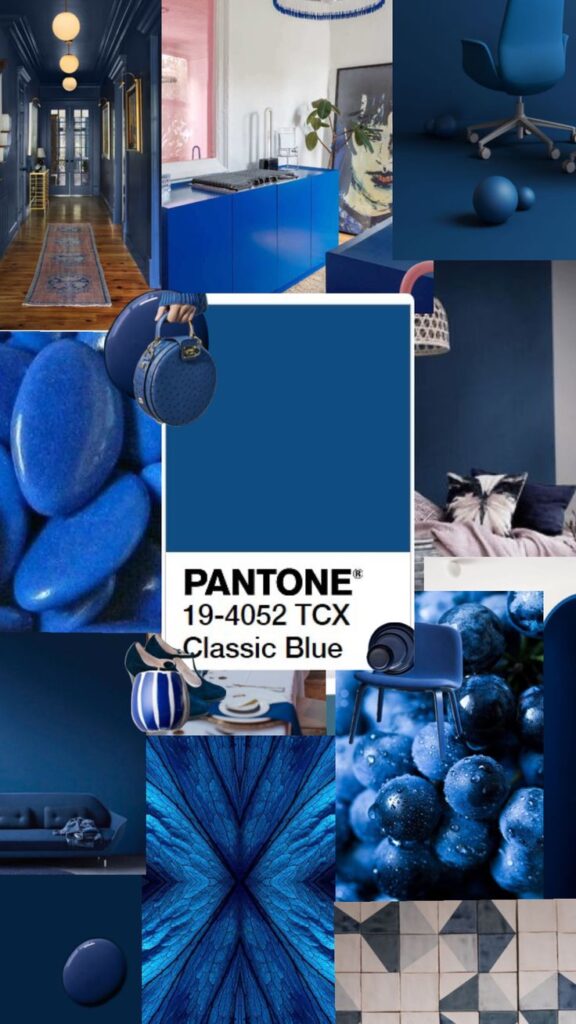

Key Takeaways
- Blue Pantone shades add calmness and balance to a home.
- Picking the right blue tones creates harmony across rooms.
- Easy touches of blue can refresh the look in any season.
Understanding Blue Pantone Style
Blue Pantone style centers on using specific blue shades set by the Pantone Color Institute. These blues range from bright to muted and shape how blue can be applied in home decor. The style mixes color science with design trends to create balanced, appealing spaces.
What Is Blue Pantone Style


Blue Pantone style is the use of official Pantone blue shades in decorating and design. Pantone assigns unique codes to colors, making it easy to match and reproduce them accurately. This style focuses on integrating these standardized blues in furniture, walls, or accessories.
The goal is to create harmony through precise color choices. Using Pantone blues avoids color clashes because the tones are carefully selected and tested. This makes rooms feel coordinated and intentional, highlighting blue’s calming and versatile nature.
Popular Blue Pantone Shades
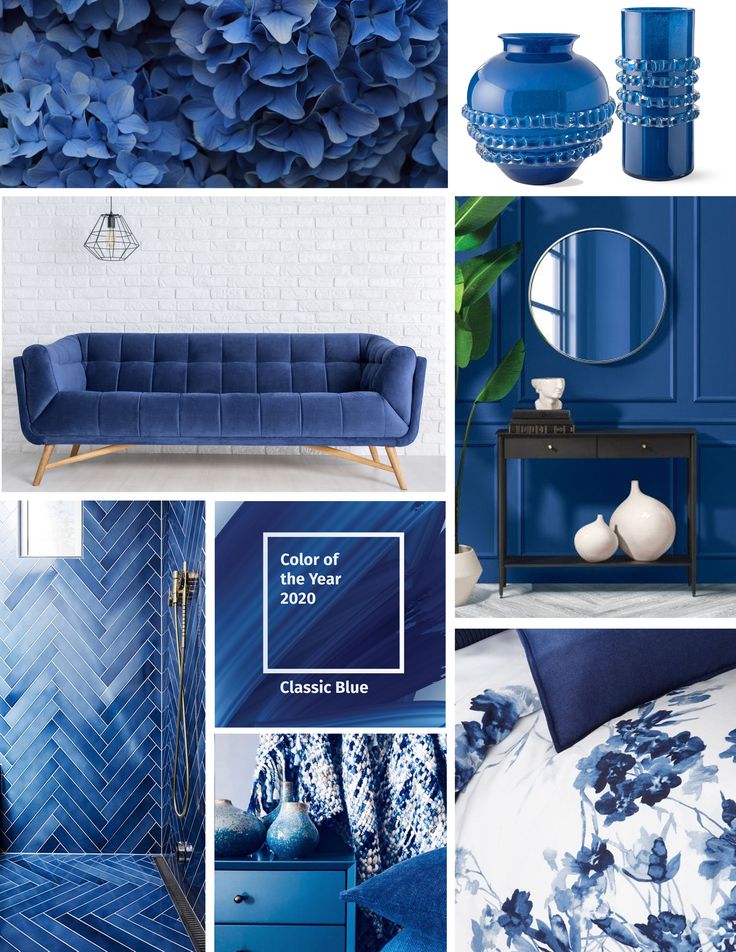

Some popular Pantone blues include Classic Blue (Pantone 19-4052), known for its deep and stable look. It has been used frequently in homes to bring a peaceful, timeless feel. Another well-liked shade is Blue Atoll (Pantone 16-4725), which is bright and tropical, often used for vibrant accents.
Other options are Lapis Blue and Sky Blue, providing options from bold to soft. These shades suit different moods and lighting, giving designers flexible tools to create the perfect atmosphere. Buyers can find these shades in paints, fabrics, and decor items easily.
| Shade Name | Pantone Code | Use in Home Decor |
|---|---|---|
| Classic Blue | 19-4052 | Walls, furniture, textiles |
| Blue Atoll | 16-4725 | Accents, feature pieces |
| Lapis Blue | 19-3955 | Statement pieces, rugs |
| Sky Blue | 14-4318 | Curtains, bedding |
Pantone’s Influence on Home Design

Pantone’s yearly color picks affect home design trends worldwide. When a blue is named as Color of the Year, it prompts many brands to add that shade to their collections. This drives its popularity and availability.
Designers rely on Pantone to communicate exact colors with manufacturers and clients. This reduces guesswork and improves consistency in projects. Pantone’s system also helps mix and match colors with confidence, encouraging creative but balanced approaches focused on blue hues.
Benefits of Incorporating Blue Pantone at Home
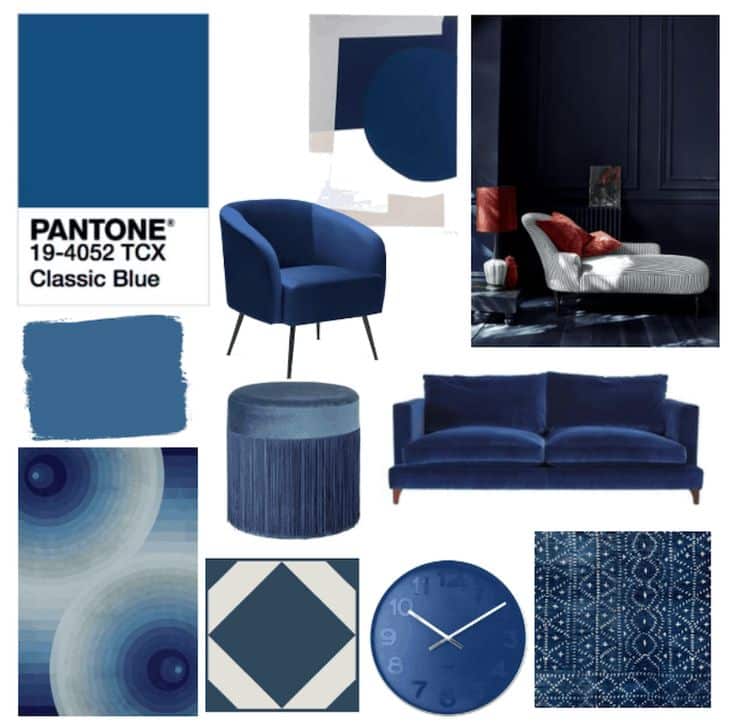

Using blue Pantone shades adds a calm and fresh feel to living spaces. It works well with different styles and can make rooms appear brighter and more open.
Emotional Impact of Blue Shades
Blue tones often bring a sense of calm and peace to a room. People may feel more relaxed and less stressed in spaces with blue walls or furniture.
Lighter blues can create an airy, peaceful mood, while deeper blues offer a cozy and secure feeling. These emotional effects make blue a good choice for bedrooms and living rooms.
Blue also encourages focus and clarity. It is often used in home offices or study areas where concentration is important.
Versatility in Interior Design


Blue Pantone colors mix well with many other shades. They look good with neutrals like white, gray, and beige, as well as with bold colors like orange or yellow.
Different blue tones fit various design styles. Pale blues suit minimalist or coastal looks, while rich navy blues work well in traditional or modern spaces.
Blue can be used on walls, furniture, textiles, or decor items. This flexibility lets people add small touches or make a big statement depending on their style.
List of common uses:
- Accent walls
- Sofas and chairs
- Curtains and rugs
- Decorative pillows
Enhancing Natural Light
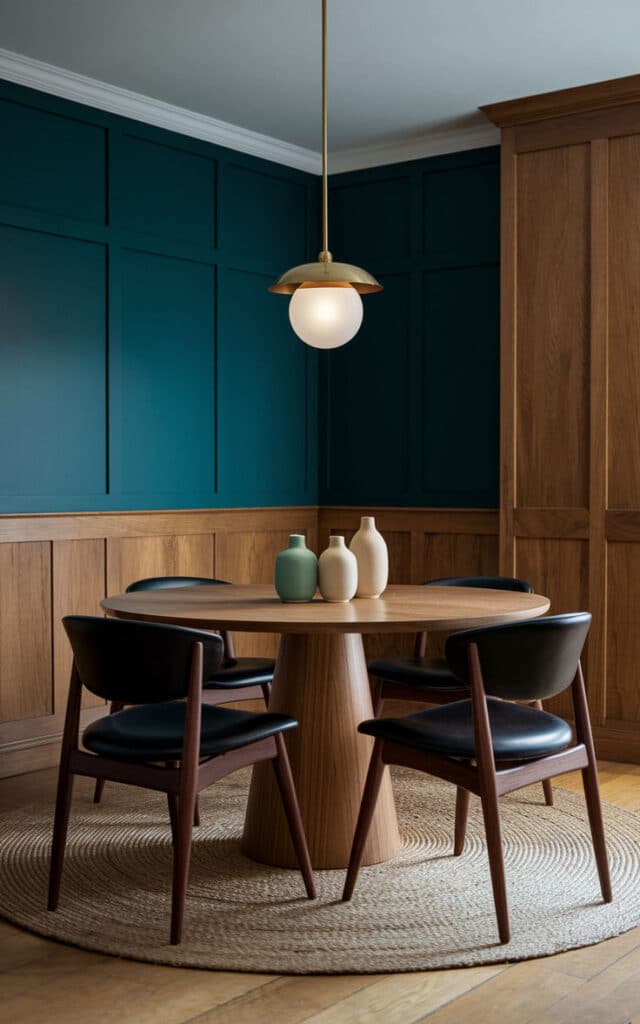
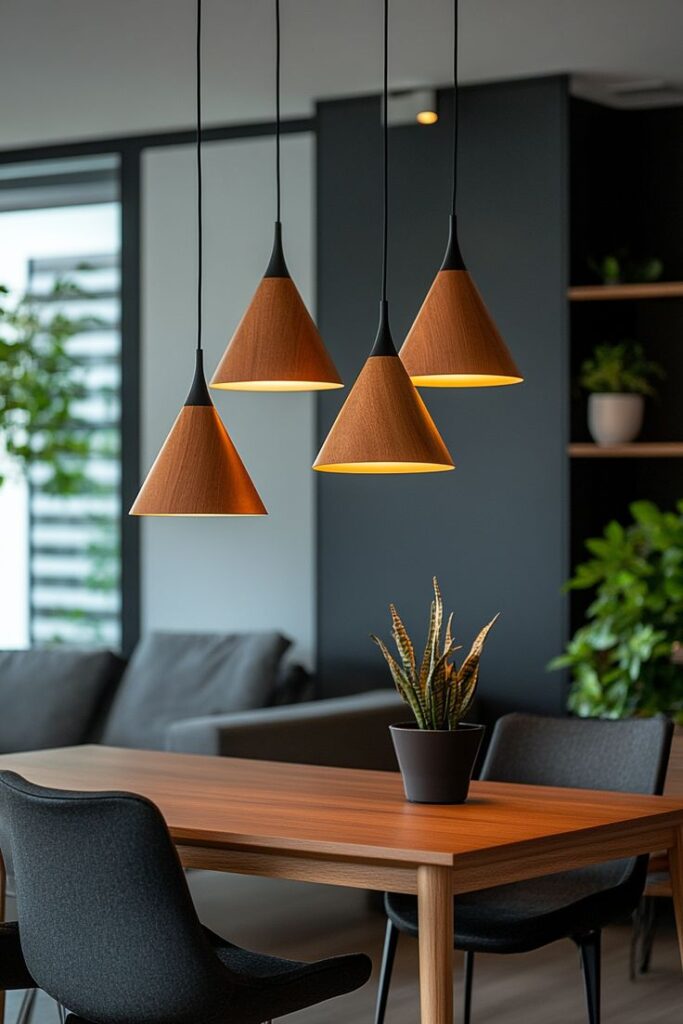
Blue shades can help reflect natural light, making rooms feel more open and bright. Light blues especially work well in spaces with limited sunlight.
Using blue on walls or ceilings can also create the illusion of more space. It makes rooms look larger by adding depth and airiness.
Pairing blue with white or light-colored trim maximizes light reflection. This combo adds brightness without the harshness of pure white.
Blue window treatments can soften sunlight, reducing glare while still letting in fresh light.
Choosing the Right Blue Pantone Palette
Selecting the best shades, pairing them with other colors, and matching blue with materials are key to creating a balanced look. Each step shapes how the blue will appear and feel in a home. Small choices can change the whole room’s vibe.
Selecting the Best Shades for Your Space
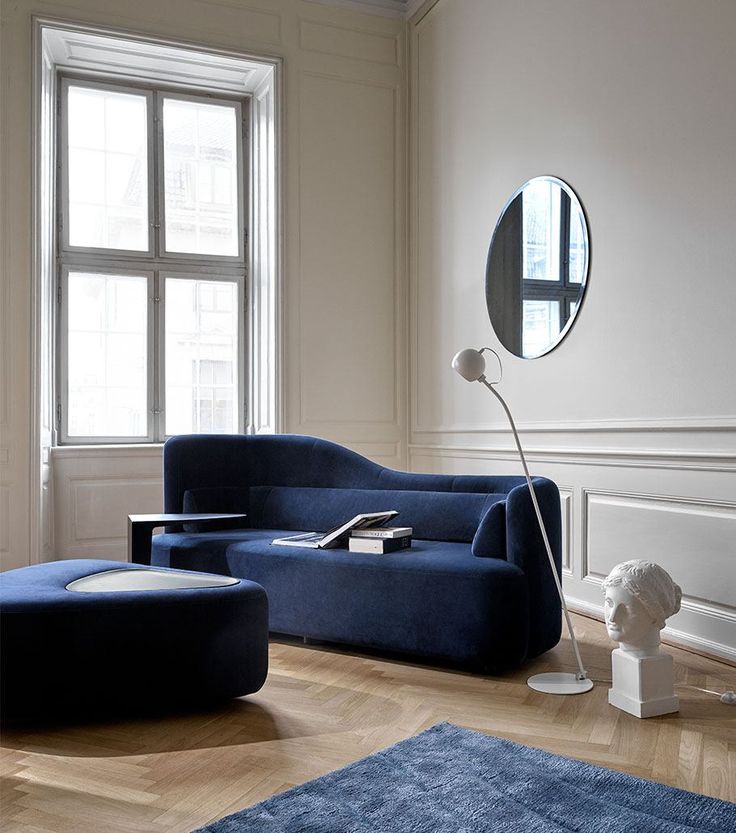
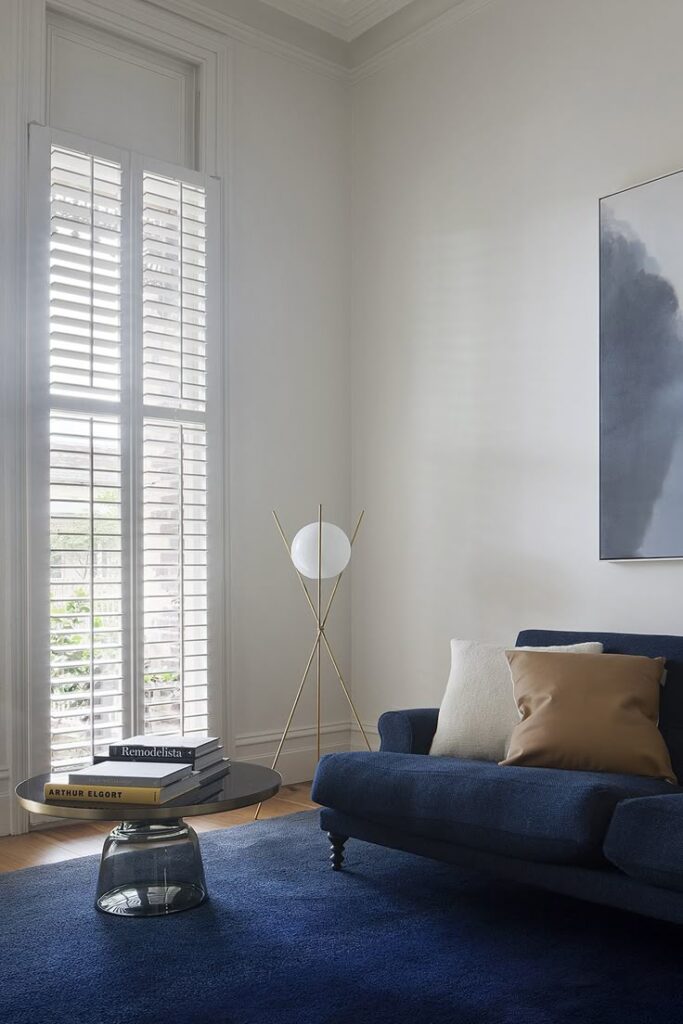
Choosing the right blue depends on room size, light, and purpose. Lighter blues like Pantone 290 C brighten small rooms and create a calm feel. Darker shades like Pantone 295 C add depth and work well in larger spaces or rooms needing a cozy atmosphere.
Cool blues with green undertones suit modern and minimal styles. Warmer blues with gray or purple tones fit more traditional or elegant designs. Test small patches on the wall before committing, as blues can change with sunlight and artificial light.
Pairing Blue Pantone With Other Colors
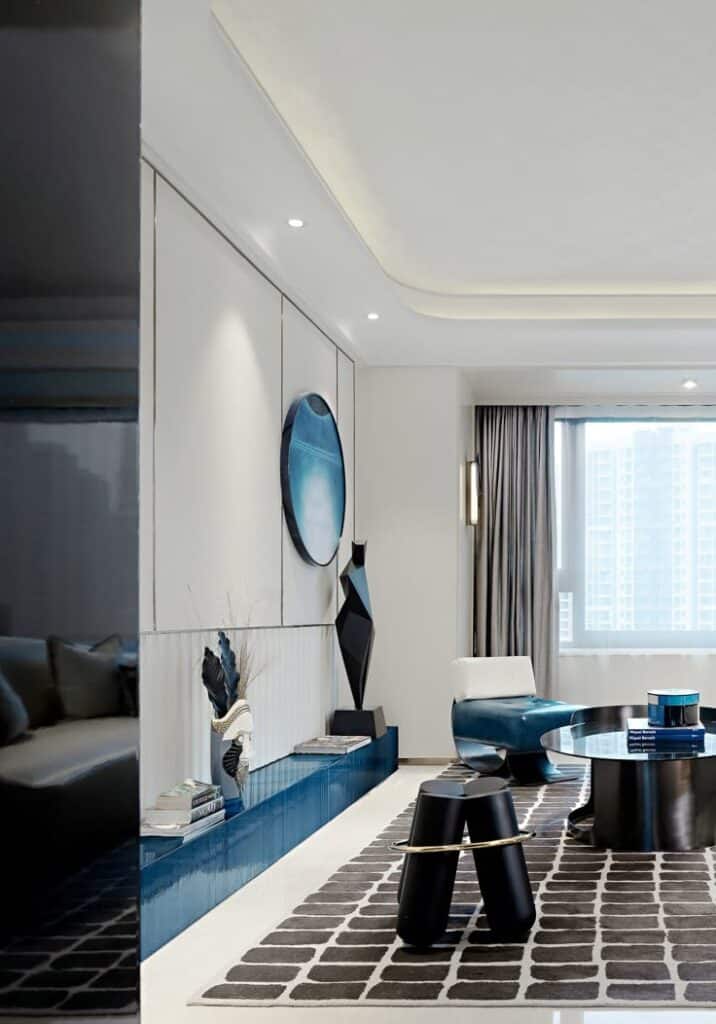
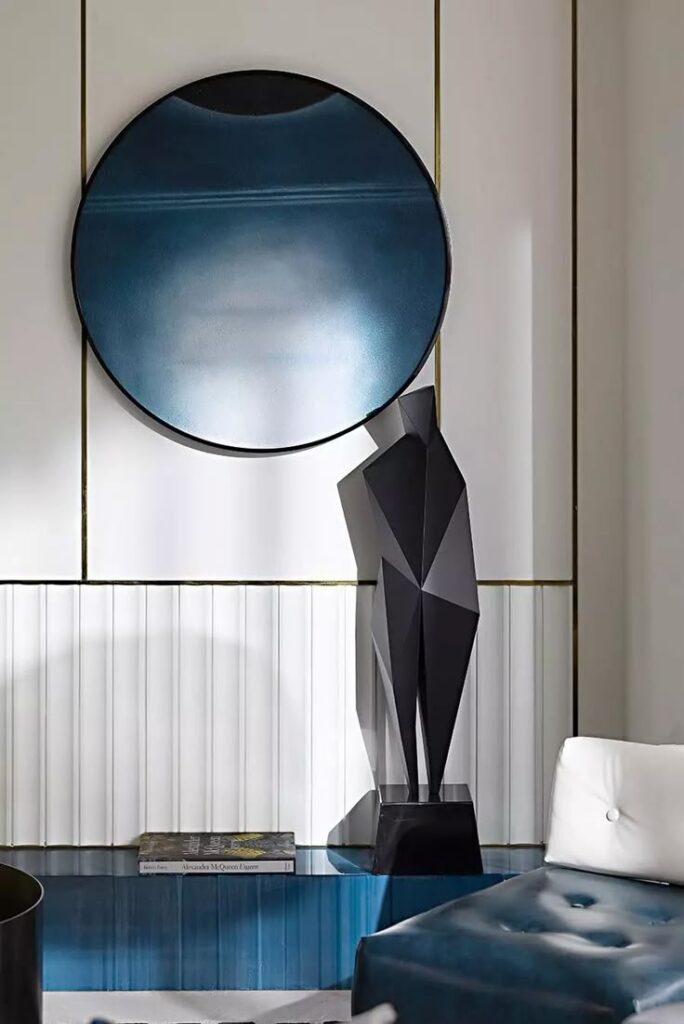
Blue pairs well with many colors, but the combination changes its effect. To create contrast, use warm colors like mustard yellow or burnt orange. These make blue pop and add energy.
For a soft, calm palette, pair blue with neutral colors like beige, gray, or white. This combination keeps the space peaceful and timeless. Using metallics like silver or gold with blue adds a touch of luxury without overpowering it.
Matching Blue With Different Materials
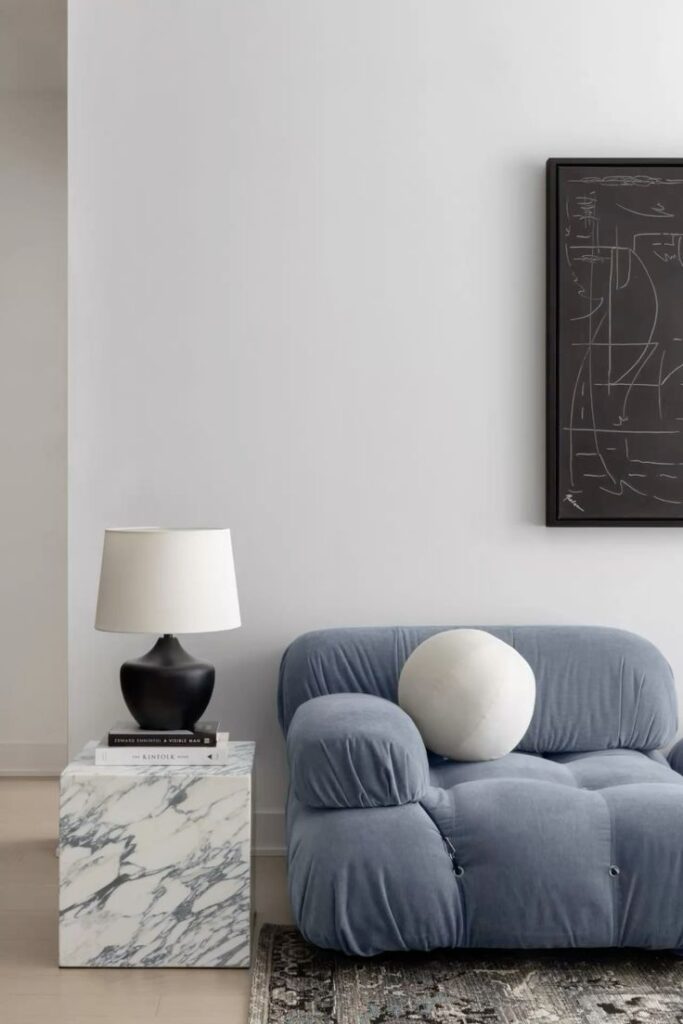

Blue Pantone colors work differently on fabrics, wood, and metals. Matte blues on soft fabrics create a cozy and relaxed feel. Glossy blues on ceramic or glass offer a sleek look suitable for modern spaces.
Wood tones paired with blue depend on warmth. Light woods bring a fresh, natural vibe; dark woods give richness and contrast. Metals in brushed nickel or chrome complement cool blues, while brass or copper fit warmer blues for a balanced look.
Application of Blue Pantone in Different Rooms
Blue Pantone adds both calmness and style to a home. It works well in various spaces by creating mood and enhancing decor. Different shades and uses of blue can make each room feel unique and balanced.
Living Room Transformations
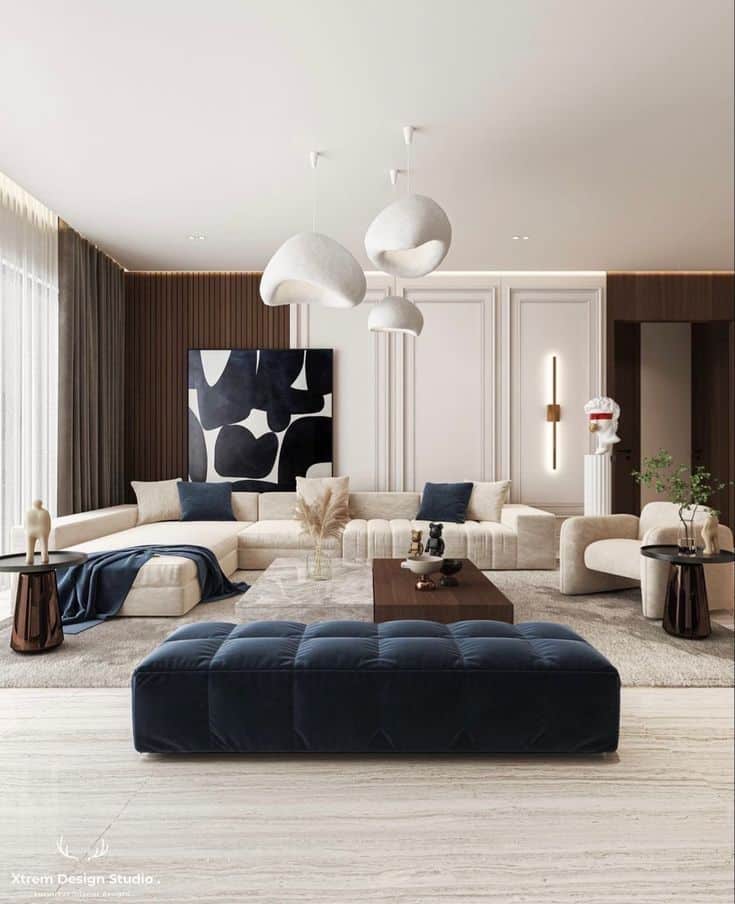

In the living room, Blue Pantone shades bring a calm and sophisticated atmosphere. Deep blues on walls help create a cozy, relaxing space. Lighter blue tones on soft furnishings like sofas and cushions add a fresh, airy feel.
Pairing blue with neutral colors such as gray or beige softens the look. Using blue artwork or rugs can anchor the room without overwhelming it. Blue lamps or curtains offer subtle color highlights that brighten the space.
Blue Pantone in Bedrooms
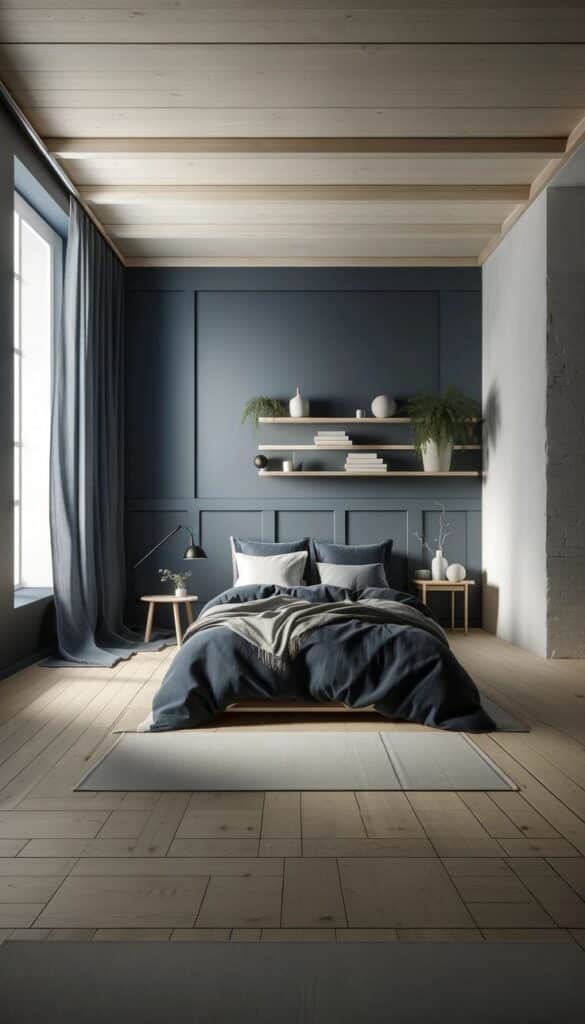
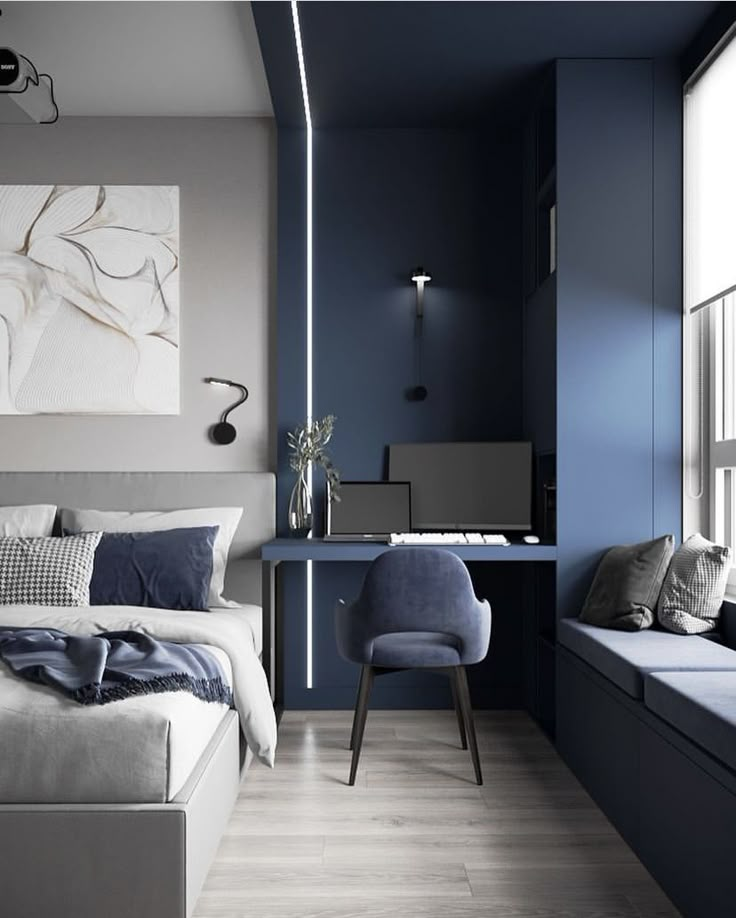
Bedrooms benefit from Blue Pantone by promoting rest and tranquility. Cool blue walls or bedding encourage relaxation and better sleep. Soft blues combined with white linens keep the room light and stress-free.
Accent pieces like throw blankets or wall art in darker blues add depth. Blue tones also work well with natural wood furniture, for a balanced, calming effect. Using blue lighting in small elements can create a peaceful mood at night.
Accenting Kitchens and Bathrooms
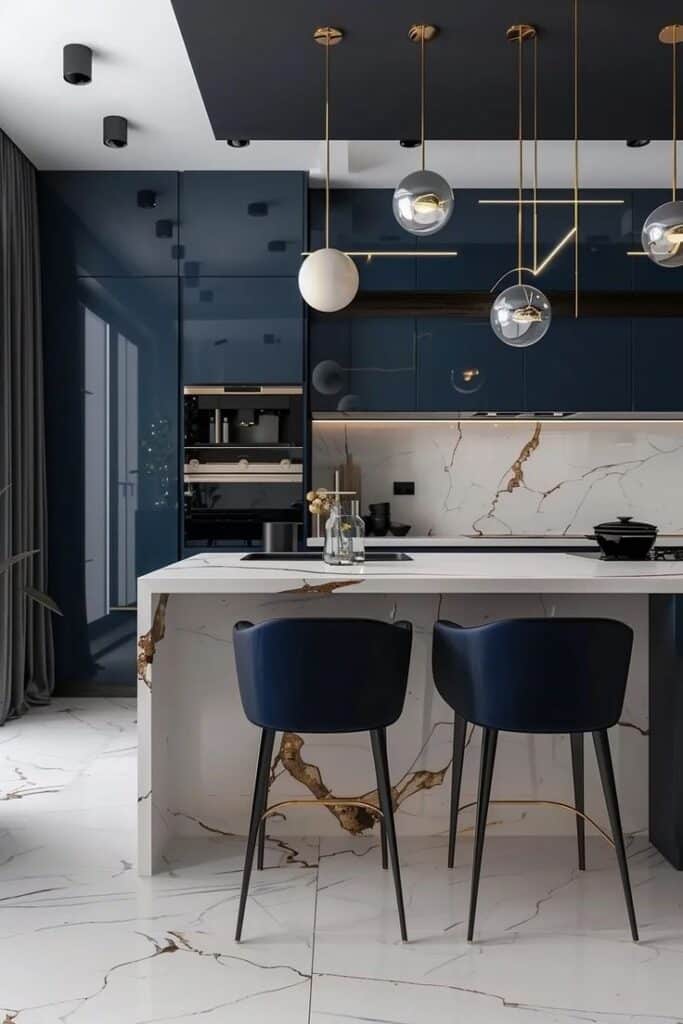
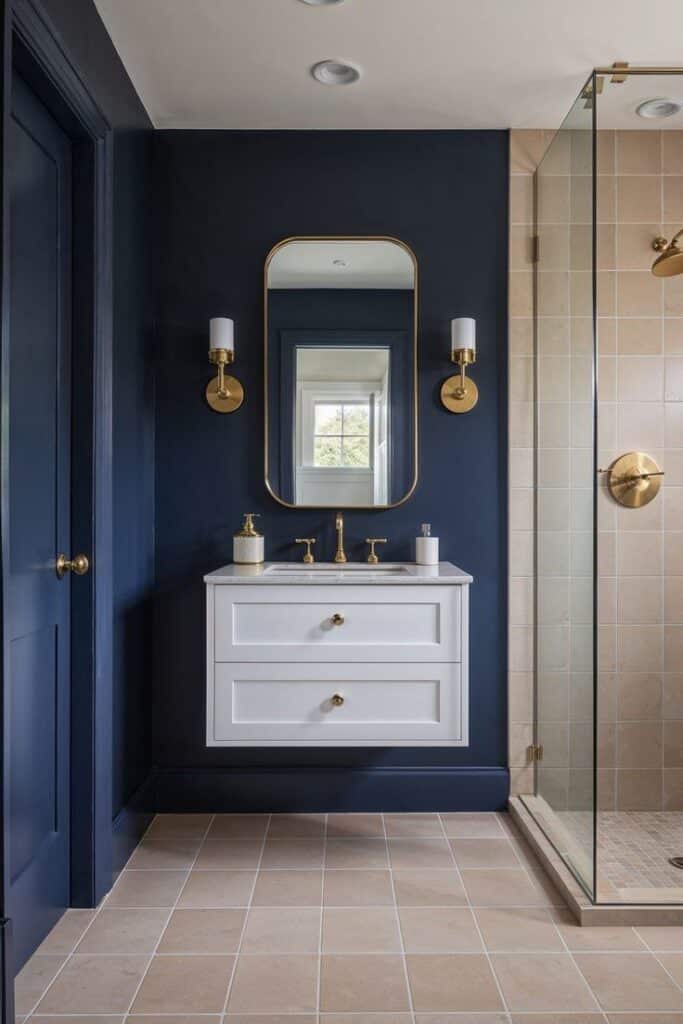
Bright blue accents in kitchens refresh the space without overpowering it. Blue tiles, backsplashes, or cabinet handles can add a clean, modern touch. A blue countertop or small appliances bring style and contrast.
In bathrooms, blue Pantone works well with white fixtures for a crisp, clean look. Towels, shower curtains, and storage containers in blue enhance the cool, fresh feel. Light and medium blue tones help spaces feel larger and more open.
Decor Ideas for Blue Pantone Style
Blue Pantone style includes choosing the right furniture, soft textiles, and eye-catching artwork. Each part helps create a balanced look that feels modern and fresh without being too loud or dull.
Furniture Selections
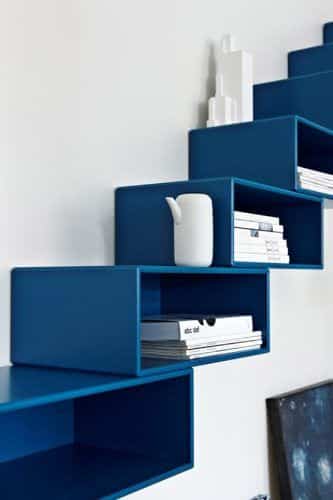

Choosing furniture in blue Pantone means focusing on clean lines and solid colors. Sofas or armchairs in a deep or muted blue work well. Avoid overly bright or neon blues that can be tiring to look at.
Wood tones like oak or walnut pair well with blue. Metal legs or accents in black or chrome add a modern touch. Simple shapes, like boxy sofas or streamlined chairs, keep the style sharp and uncluttered.
Tables and storage pieces in neutral colors balance the blue. Opt for minimal designs that don’t compete with the main blue furniture.
Textiles and Accessories
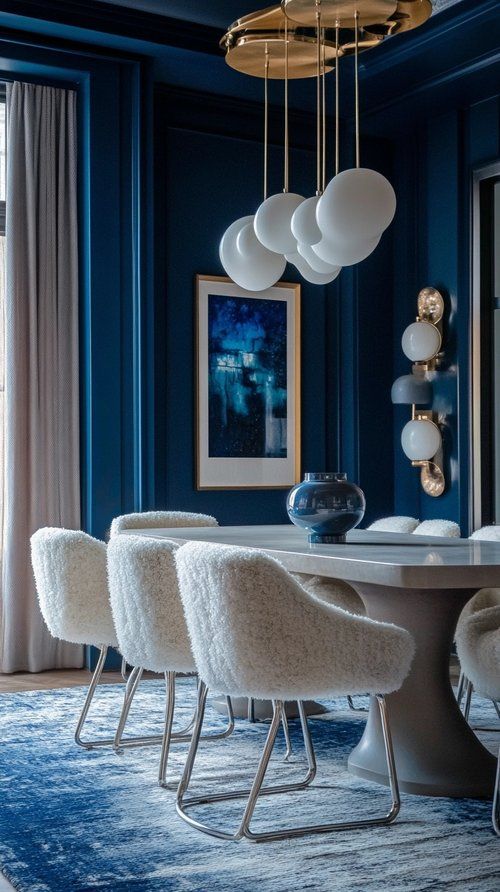
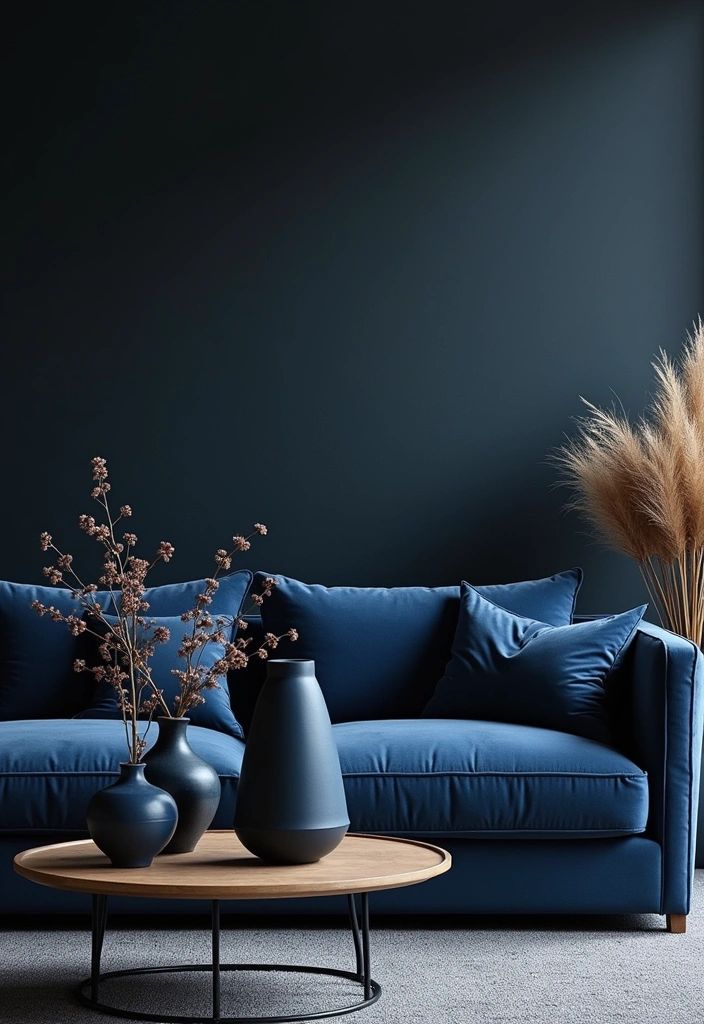
Textiles are important to add softness and variety. Blue cushions or throws in different shades create depth. Choose fabrics like cotton, linen, or velvet for texture.
Curtains in lighter blue tones can brighten a room without overwhelming it. Rugs with blue patterns bring warmth and tie the space together.
Accessories like lampshades, vases, or baskets in blue or neutral tones keep the theme consistent. Mix in some whites or greys to prevent the blue from dominating the room.
Artwork and Decor Accents
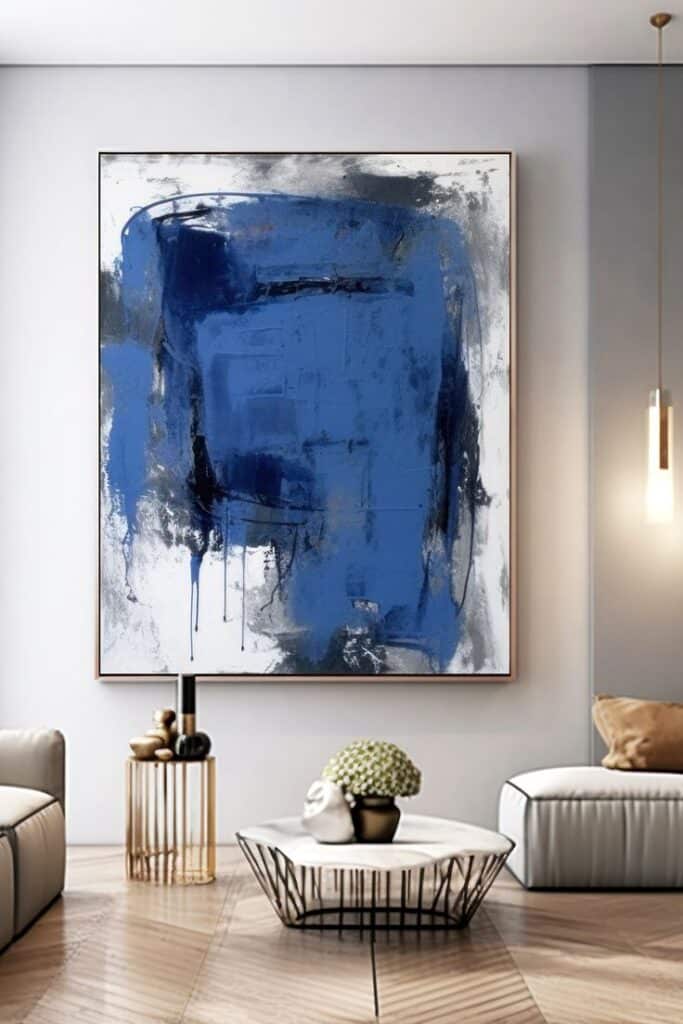
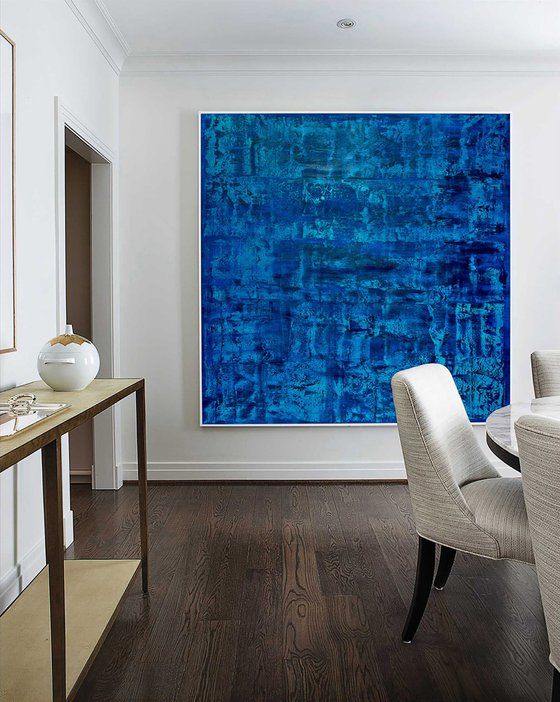
Artwork should complement the blue Pantone style with simple designs. Abstract prints or landscapes that include blue tones work well. Frames in black, white, or natural wood suit the style best.
Decor accents like ceramic bowls, candles, or books can boost the blue theme. Avoid cluttering surfaces; select a few pieces that highlight the color without excess.
Mirrors with thin black or metal frames help reflect light and make blue shades stand out more in the room.
Styling Tips for a Cohesive Look
Creating a balanced and unified space requires attention to color harmony and material choices. Combining different tones and textures carefully will help the blue Pantone theme feel natural and well-planned.
Balancing Warm and Cool Tones
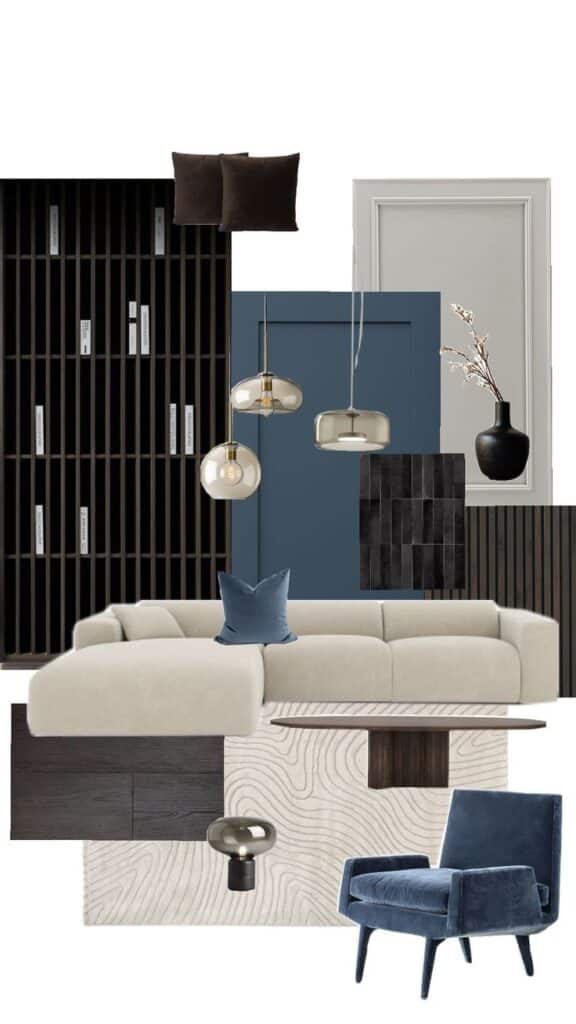
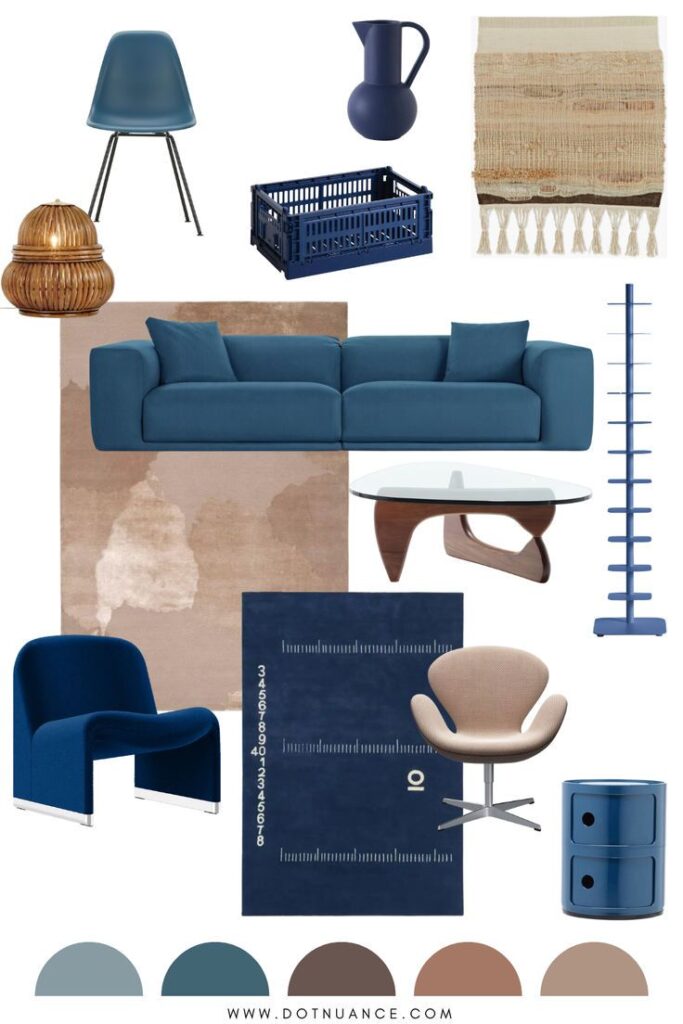
Blue is often considered a cool color, but pairing it with warm tones can add depth. A space with blue walls or furniture works well when mixed with warm accents like soft beige cushions or wooden furniture.
This balance prevents the room from feeling too cold or stark. Use warm metals like brass or copper for light fixtures and decor. These add warmth without clashing with blue.
Avoid too many bright warm colors. Instead, stick to muted tones like terracotta, warm gray, or caramel. This keeps the focus on blue while gently enriching the palette.
Layering Textures and Finishes


Using a variety of textures makes blue tones more interesting. Smooth finishes like glossy ceramics work well next to soft, plush fabrics. This mix stops the design from feeling flat.
Consider layering different materials such as velvet pillows, linen curtains, and matte-painted furniture. Each texture reflects light differently, creating subtle contrast.
Finish choices also help. Pair matte walls with shiny accessories, or combine rough wood with sleek glass. This layering highlights blue tones and adds dimension to the room.
Seasonal Updates With Blue Pantone
Blue Pantone can change the feeling of a room depending on the season. It works well for bright and airy summer looks or for warm and inviting winter settings. Using the right shades and decor makes the difference.
Refreshing Spaces for Summer

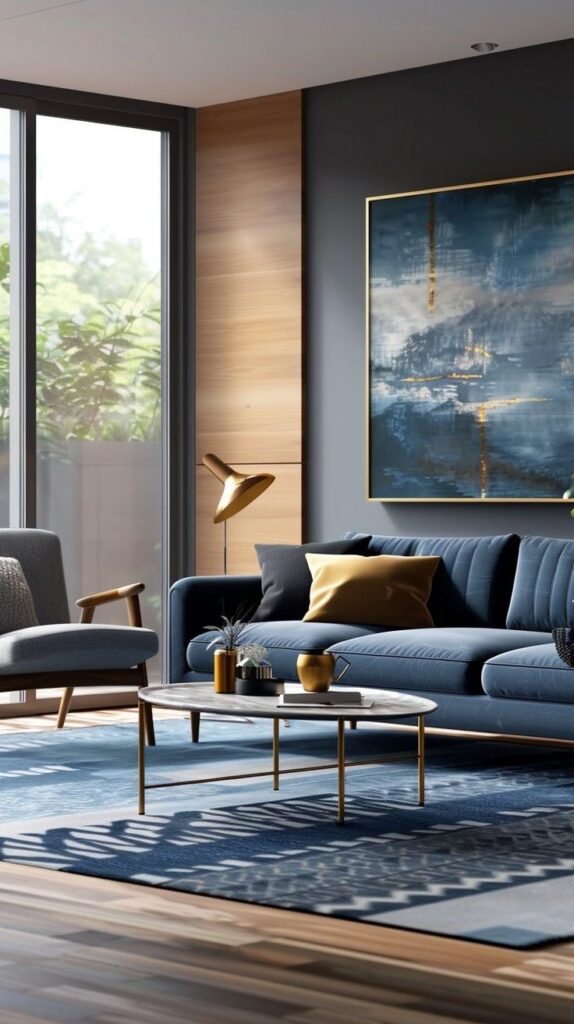
During summer, lighter blue shades bring a cool and fresh look. Soft blues like sky or powder blue help rooms feel open and calm. They work well on walls, curtains, or cushions.
Adding white or light wood furniture keeps the space bright. Accessories like glass vases, seashells, or fresh flowers add a natural touch.
A few tips:
- Use sheer blue curtains to let light in.
- Add indoor plants for a natural feel.
- Choose blue rugs with simple patterns for a fresh floor look.
This style helps lower the heat effect and creates an airy feeling.
Creating Cozy Winter Vibes
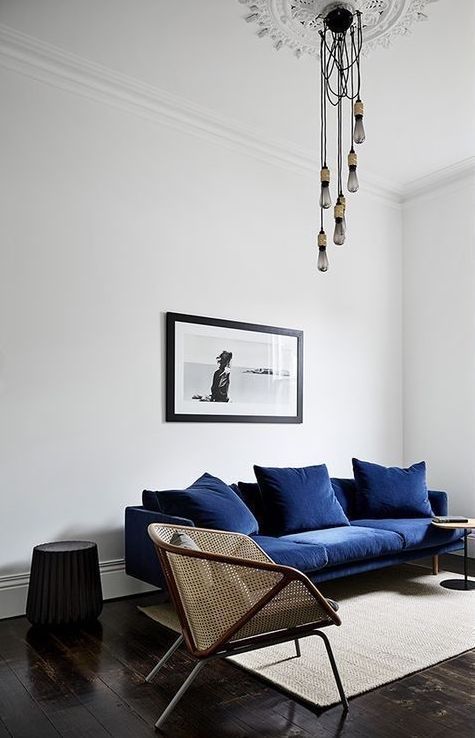

For winter, deeper blue tones like navy or indigo create warmth and comfort. These colors make a room feel snug and peaceful. Using these blues on upholstery, blankets, or walls works well.
Pairing dark blue with warm materials like wool or velvet adds texture. Soft lighting with lamps and candles enhances the cozy mood.
Key suggestions:
- Use navy throw pillows and plush blankets.
- Mix dark blue with warm browns or greys.
- Add metallic touches like brass lamps or frames for extra warmth.
This helps balance the cold outside with a warm indoor atmosphere.
Sustaining Blue Pantone Style Over Time
Keeping blue Pantone style fresh requires attention to how surfaces are cared for and whether the design is meant to last or follow current trends. Choosing the right cleaning methods and deciding between classic or trendy elements helps maintain its appeal.
Maintaining and Cleaning Blue Surfaces
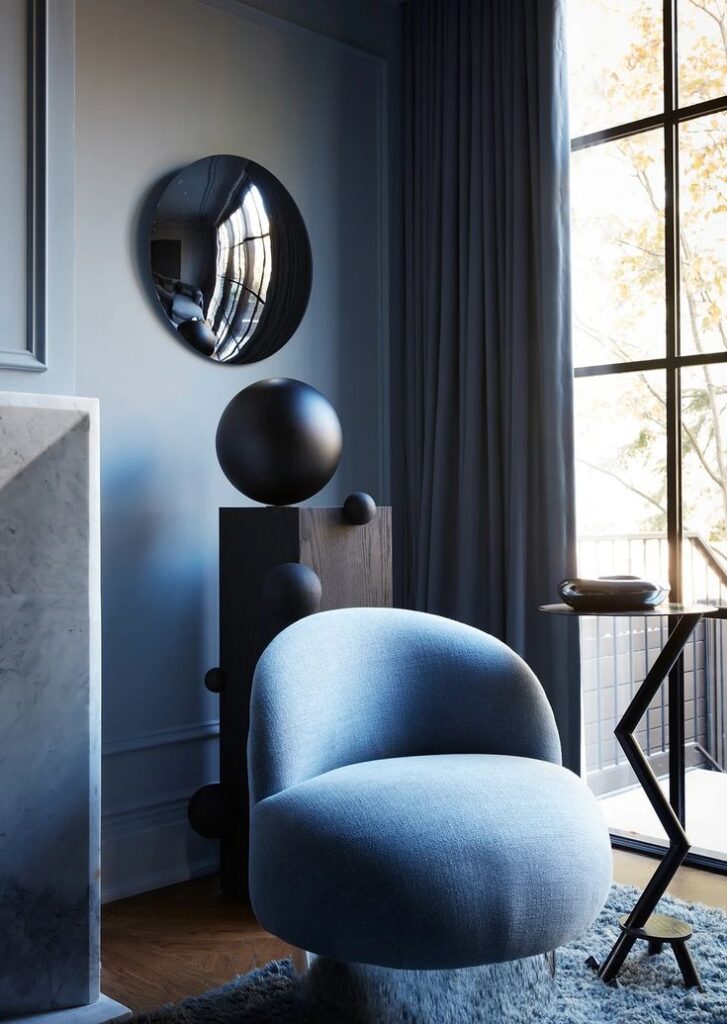
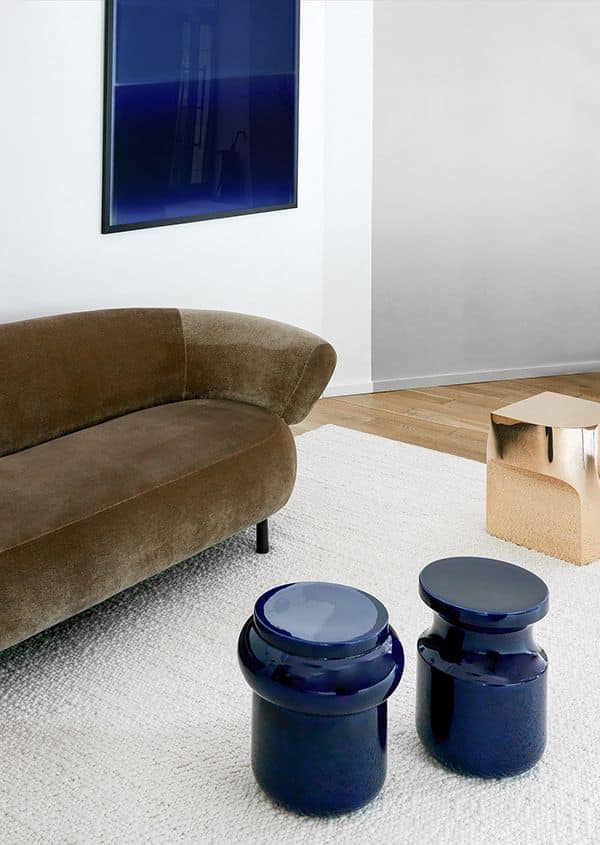
Blue surfaces, especially painted walls and furniture, need gentle cleaning to avoid fading. Use a soft cloth with mild soap and water rather than harsh chemicals.
For fabrics in blue Pantone shades, regular vacuuming prevents dust build-up. Spot clean stains quickly with a gentle fabric cleaner designed for colored materials.
Avoid direct sunlight on blue items as UV rays can cause colors to fade over time. Using curtains or blinds helps protect these surfaces.
Regular touch-ups on painted areas prevent chips or scratches from damaging the overall look. Keep a small amount of original paint for quick repairs.
Timeless Versus Trendy Approaches

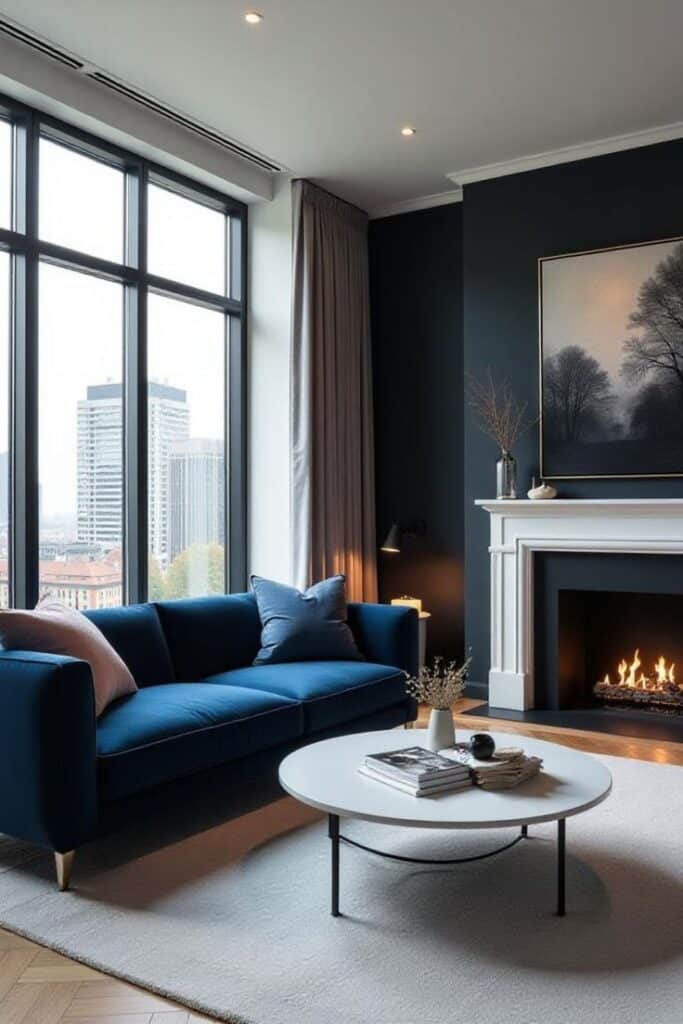
A timeless blue Pantone style focuses on deeper, muted blues and classic accessories. These choices age well and work with many decor changes.
Trendy styles use brighter or unusual blue tones and bold patterns. These may look fresh at first but can feel outdated after a few years.
To mix both, use timeless blue for walls or major furniture, and add trendy blue items like pillows or art. This balance lets the style evolve without major redecorating.
Showcasing Your Blue Pantone Home
Lighting and photography are key to highlighting blue Pantone shades. The right light enhances the color’s depth, while good photos help share the style with others. Attention to detail makes the color pop in any space.
Lighting Techniques for Blue Shades

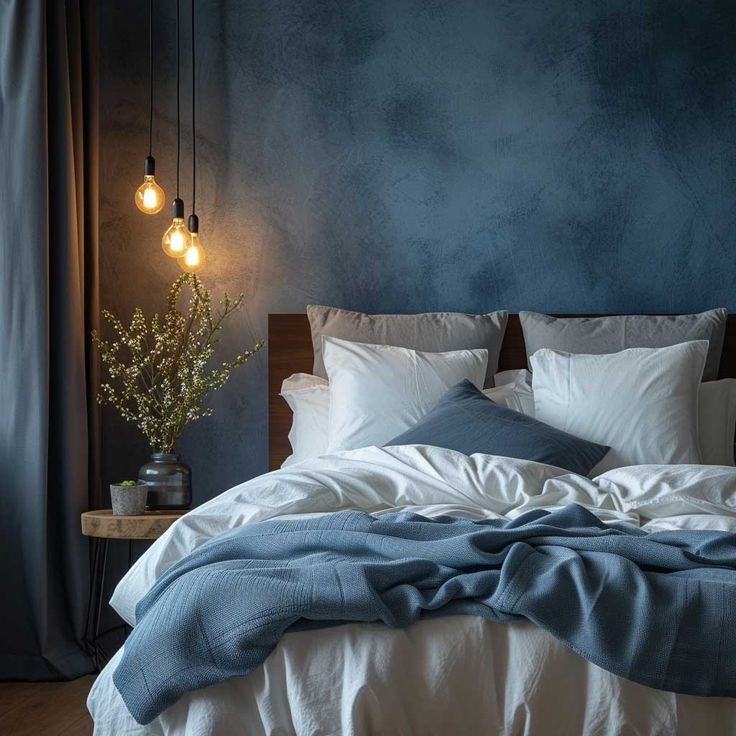
Natural light works best with blue tones. It brings out the true color without washing it out. Sheer curtains help soften sunlight, avoiding harsh glare on blue walls or furniture.
Warm LED bulbs can create contrast by adding a slight yellow tint. This highlights the coolness of blue. Using dimmable lights allows control over brightness, which affects how intense the blue appears.
Positioning lights near blue accents emphasizes their texture and shade differences. Avoid direct overhead lighting because it may cast shadows that dull the color.
Photography and Social Sharing
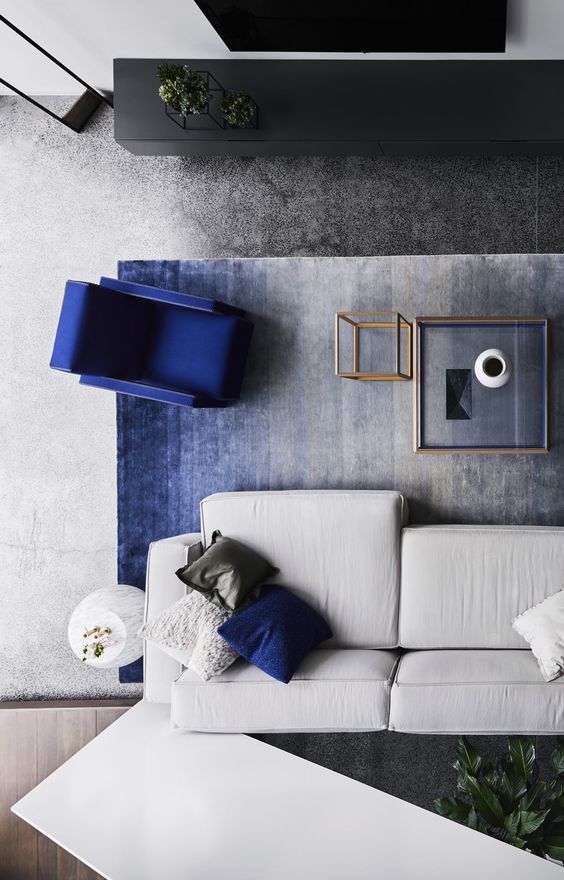
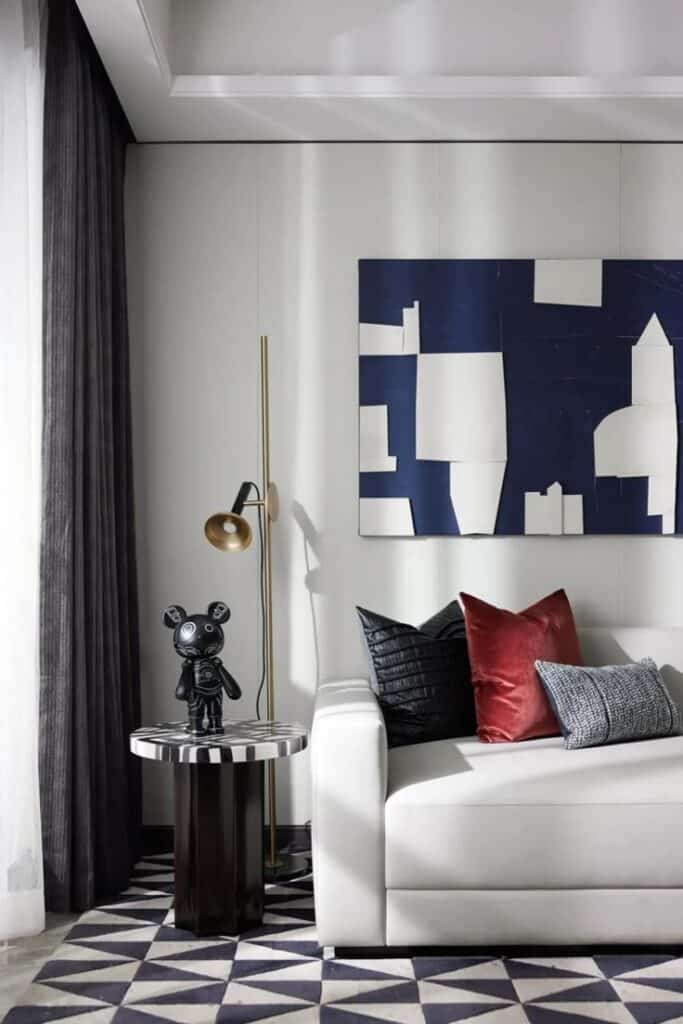
Capturing blue Pantone interiors requires attention to color balance. Use a camera setting that avoids overly cool or warm tones to keep blue accurate. Natural light photos often look most true to color.
Declutter spaces before taking pictures. Focus on a few blue elements rather than the whole room.
For social sharing, use neutral backgrounds to make blue stand out. Editing tools should adjust brightness and contrast without changing the base color. Tagging Pantone or related accounts helps connect with others interested in this palette.
- 149shares
- Facebook0
- Pinterest149
- Twitter0
